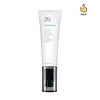What's inside
What's inside
 Key Ingredients
Key Ingredients

 Benefits
Benefits

 Concerns
Concerns

 Ingredients Side-by-side
Ingredients Side-by-side

Water
Skin ConditioningGlycerin
HumectantDipropylene Glycol
HumectantPhenyl Trimethicone
Skin Conditioning1,2-Hexanediol
Skin ConditioningCaprylic/Capric Triglyceride
MaskingCaprylyl Methicone
Skin ConditioningPolyglycerin-3
HumectantPentaerythrityl Tetraethylhexanoate
EmollientCetearyl Alcohol
EmollientBeta-Glucan
Skin ConditioningCentella Asiatica Extract
CleansingPolygonum Cuspidatum Root Extract
AntioxidantScutellaria Baicalensis Root Extract
AstringentGlycyrrhiza Glabra Root Extract
BleachingCamellia Sinensis Leaf Extract
AntimicrobialChamomilla Recutita Flower Extract
MaskingRosmarinus Officinalis Leaf Extract
AntimicrobialBetaine
HumectantAllantoin
Skin ConditioningCyanocobalamin
Skin ConditioningRosa Hybrid Callus Culture Extract
HumectantButyrospermum Parkii Butter
Skin ConditioningC14-22 Alcohols
Emulsion StabilisingButylene Glycol
HumectantC12-16 Alcohols
EmollientC12-20 Alkyl Glucoside
EmulsifyingCarbomer
Emulsion StabilisingHydrogenated Lecithin
EmulsifyingPalmitic Acid
EmollientXanthan Gum
EmulsifyingTromethamine
BufferingDisodium EDTA
Sodium Hyaluronate
HumectantGlucose
HumectantCitric Acid
BufferingMaltodextrin
AbsorbentPolyglyceryl-10 Oleate
Skin ConditioningSodium Citrate
BufferingWater, Glycerin, Dipropylene Glycol, Phenyl Trimethicone, 1,2-Hexanediol, Caprylic/Capric Triglyceride, Caprylyl Methicone, Polyglycerin-3, Pentaerythrityl Tetraethylhexanoate, Cetearyl Alcohol, Beta-Glucan, Centella Asiatica Extract, Polygonum Cuspidatum Root Extract, Scutellaria Baicalensis Root Extract, Glycyrrhiza Glabra Root Extract, Camellia Sinensis Leaf Extract, Chamomilla Recutita Flower Extract, Rosmarinus Officinalis Leaf Extract, Betaine, Allantoin, Cyanocobalamin, Rosa Hybrid Callus Culture Extract, Butyrospermum Parkii Butter, C14-22 Alcohols, Butylene Glycol, C12-16 Alcohols, C12-20 Alkyl Glucoside, Carbomer, Hydrogenated Lecithin, Palmitic Acid, Xanthan Gum, Tromethamine, Disodium EDTA, Sodium Hyaluronate, Glucose, Citric Acid, Maltodextrin, Polyglyceryl-10 Oleate, Sodium Citrate
Water
Skin ConditioningGlycerin
HumectantAloe Barbadensis Leaf Juice
Skin ConditioningGlyceryl Stearate
EmollientCetyl Alcohol
EmollientStearic Acid
CleansingPhenyl Trimethicone
Skin ConditioningEthylhexyl Palmitate
EmollientBenzyl Alcohol
PerfumingSodium Lactate
BufferingSodium Lauryl Sulfate
CleansingSodium PCA
HumectantSodium Hydroxide
BufferingSorbitol
HumectantTetrasodium EDTA
Proline
Skin ConditioningSodium Hyaluronate
HumectantParfum
MaskingChlorphenesin
AntimicrobialPotassium Sorbate
PreservativeDehydroacetic Acid
PreservativeWater, Glycerin, Aloe Barbadensis Leaf Juice, Glyceryl Stearate, Cetyl Alcohol, Stearic Acid, Phenyl Trimethicone, Ethylhexyl Palmitate, Benzyl Alcohol, Sodium Lactate, Sodium Lauryl Sulfate, Sodium PCA, Sodium Hydroxide, Sorbitol, Tetrasodium EDTA, Proline, Sodium Hyaluronate, Parfum, Chlorphenesin, Potassium Sorbate, Dehydroacetic Acid
Ingredients Explained
These ingredients are found in both products.
Ingredients higher up in an ingredient list are typically present in a larger amount.
Glycerin is already naturally found in your skin. It helps moisturize and protect your skin.
A study from 2016 found glycerin to be more effective as a humectant than AHAs and hyaluronic acid.
As a humectant, it helps the skin stay hydrated by pulling moisture to your skin. The low molecular weight of glycerin allows it to pull moisture into the deeper layers of your skin.
Hydrated skin improves your skin barrier; Your skin barrier helps protect against irritants and bacteria.
Glycerin has also been found to have antimicrobial and antiviral properties. Due to these properties, glycerin is often used in wound and burn treatments.
In cosmetics, glycerin is usually derived from plants such as soybean or palm. However, it can also be sourced from animals, such as tallow or animal fat.
This ingredient is organic, colorless, odorless, and non-toxic.
Glycerin is the name for this ingredient in American English. British English uses Glycerol/Glycerine.
Learn more about GlycerinPhenyl Trimethicone is a silicon-based polymer. It is derived from silica.
Phenyl Trimethicone is used as an emollient and prevents products from foaming.
As an emollient, it helps trap moisture in the skin. It is considered an occlusive.
Learn more about Phenyl TrimethiconeSodium Hyaluronate is hyaluronic acid's salt form. It is commonly derived from the sodium salt of hyaluronic acid.
Like hyaluronic acid, it is great at holding water and acts as a humectant. This makes it a great skin hydrating ingredient.
Sodium Hyaluronate is naturally occurring in our bodies and is mostly found in eye fluid and joints.
These are some other common types of Hyaluronic Acid:
Learn more about Sodium HyaluronateWater. It's the most common cosmetic ingredient of all. You'll usually see it at the top of ingredient lists, meaning that it makes up the largest part of the product.
So why is it so popular? Water most often acts as a solvent - this means that it helps dissolve other ingredients into the formulation.
You'll also recognize water as that liquid we all need to stay alive. If you see this, drink a glass of water. Stay hydrated!
Learn more about Water